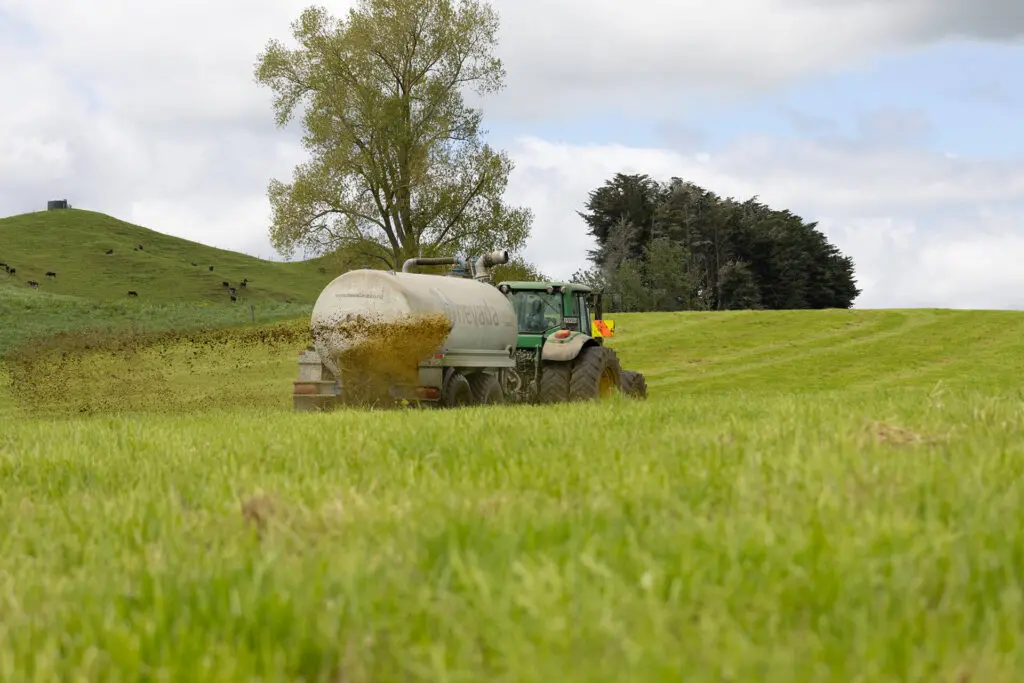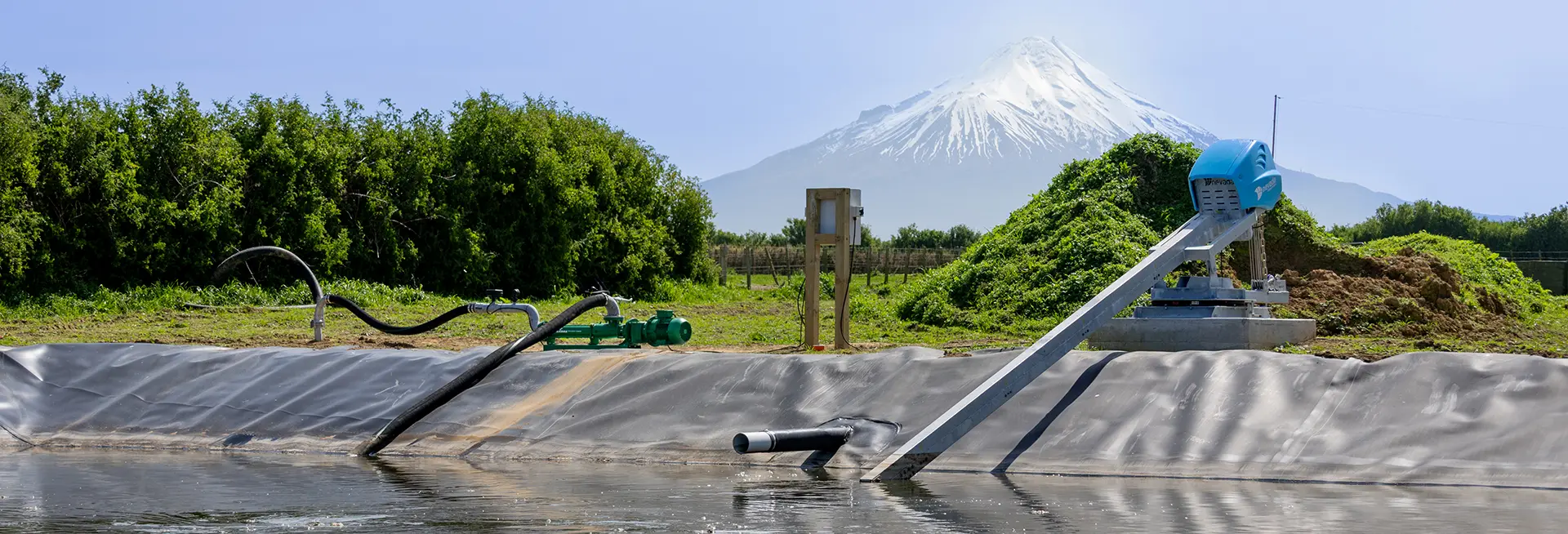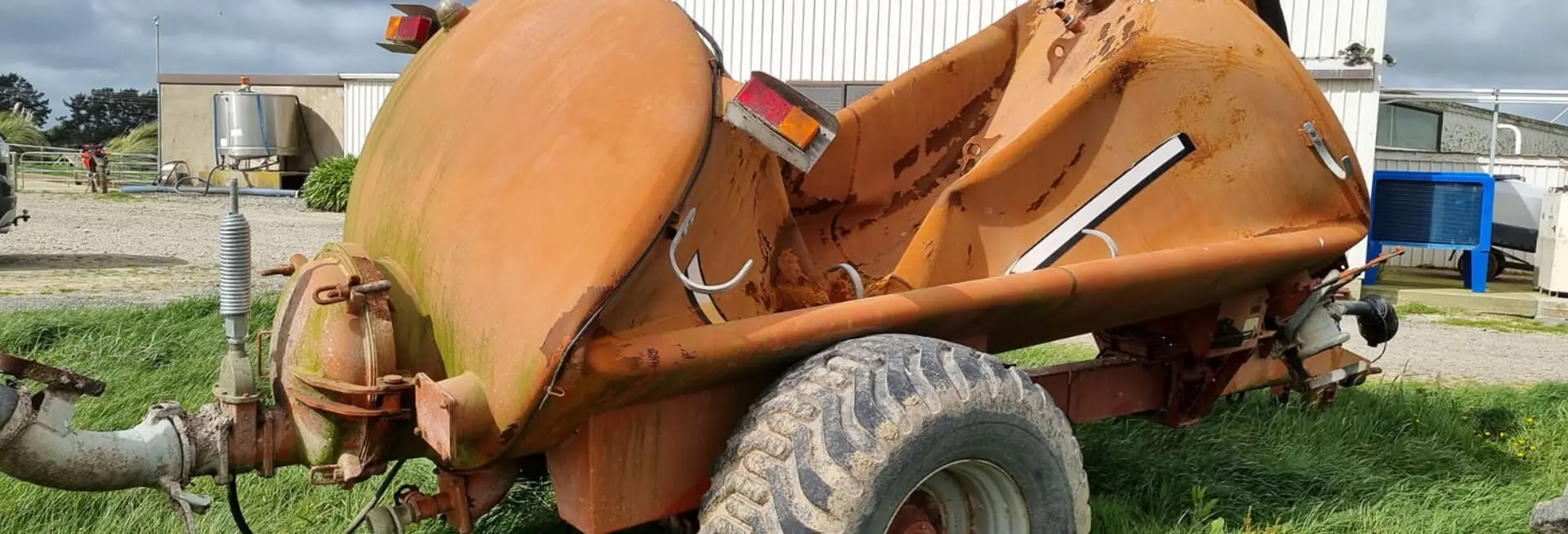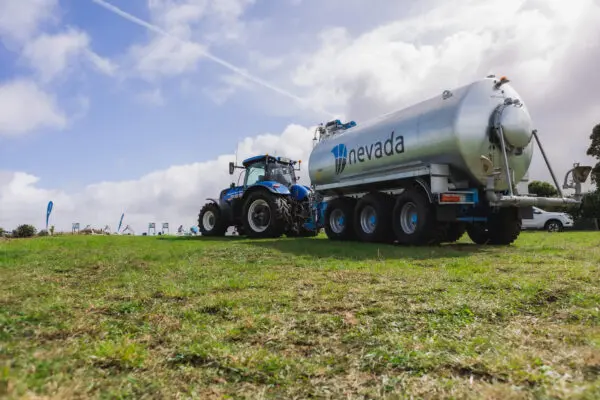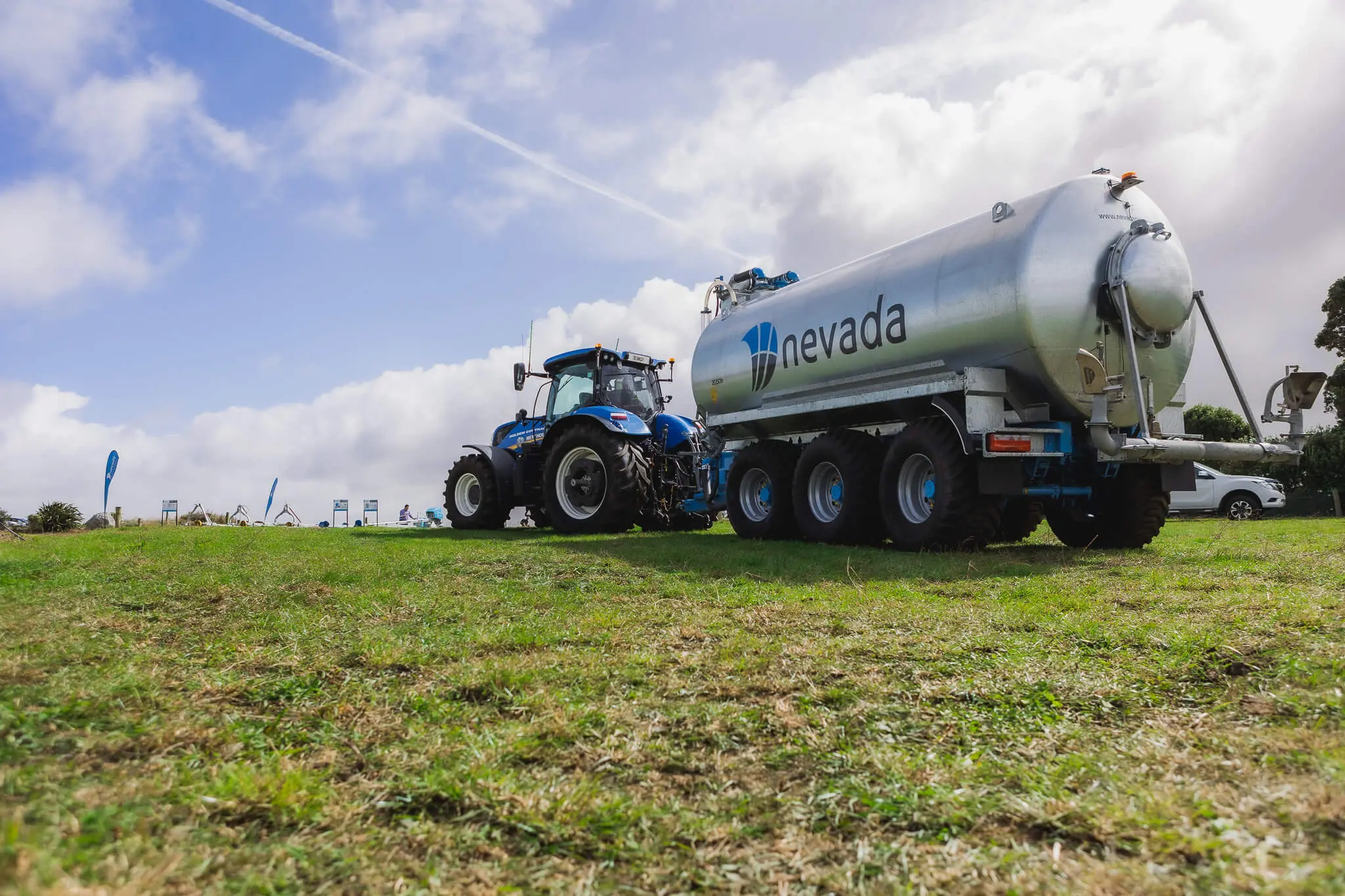Traditional Splash Plate
Using a splash plate, normal application depths are 3-5mm. Application rate needs to match the soil infiltration rate to avoid ponding and run-off. This is easily achievable even with heavy soils thanks to the revolutionary Nevada RainWave™ – a new system of achieving even more control, resulting in low application, and even spread.
Nevada RainWave™
By using low pressure and an oscillating fan pattern, the Rainwave™ achieves a wider spread and produces larger droplets, meaning virtually no wind drift, so nutrients are spread evenly.
What’s more, by using the Nevada Rainwave™, you’ll get more from your nutrients!
How?
As the name suggests, the Rainwave™ uses low pressure to spread nutrients in a gentle rain pattern. This reduces volitisation so nutrients are not lost to the atmosphere.
Benefits of Rainwave™ spreading
- Far superior to splash plate spreading
- Ideal alternative to dropper booms
- Large droplet size, so very minimal wind drift
- Better nutrient use
- Gentle low-pressure rain pattern
- Better for the environment
- Less pasture damage
- Low application depth (1-10mm)
- Safe tractor speeds (less than 7km/h)
- High volume (100m3/h – 200m3/h)
- Very even spread pattern
- Low maintenance
- Handles thick slurry (up to 20% solids)
